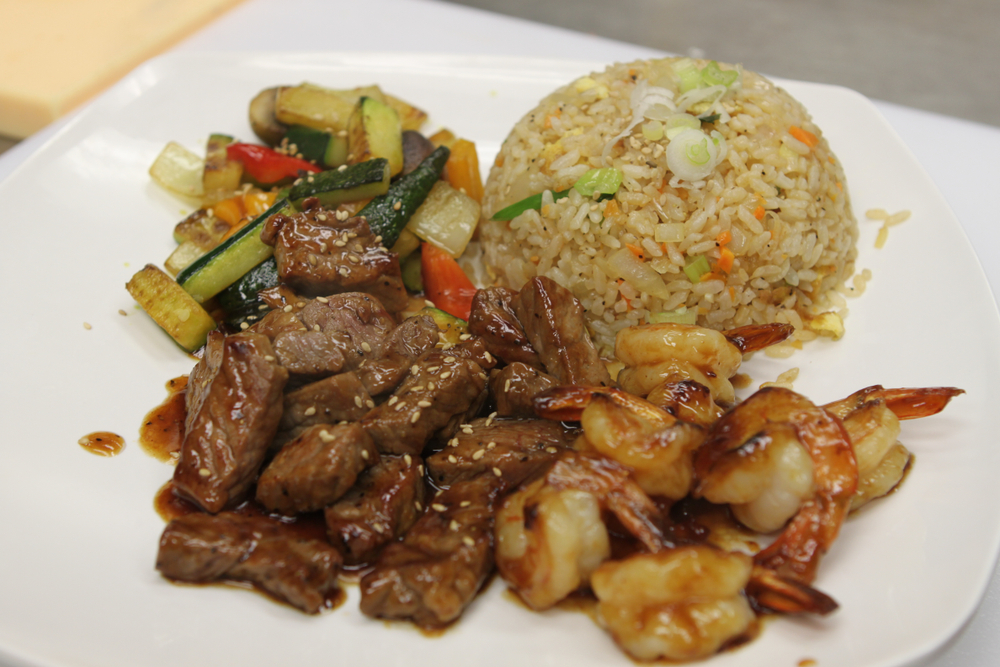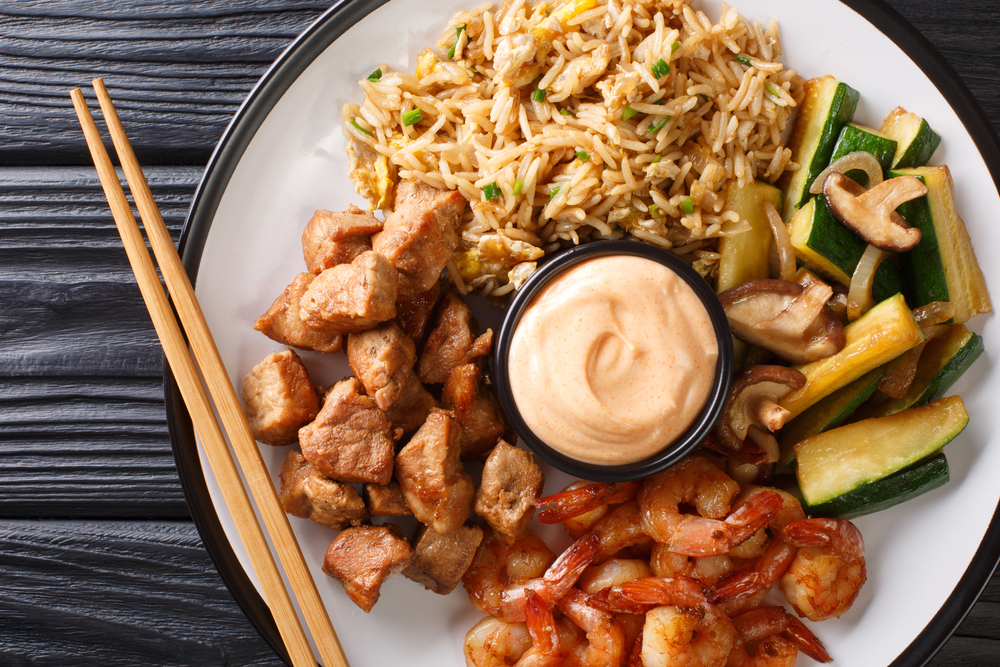Few dining experiences combine sizzling flavor, skilled artistry, and joyful entertainment quite like hibachi. This centuries-old Japanese cooking tradition has evolved from simple charcoal heating to a global culinary spectacle known for its smoky aroma, theatrical presentation, and unforgettable taste. Whether you’re a food enthusiast, a grill master, or someone who enjoys a good meal with a touch of flair, understanding what is a hibachi helps you appreciate every spark, flavor, and flame.
To many, hibachi represents more than just cooking—it’s an experience. It embodies connection, artistry, and hospitality. From its origins in ancient Japan to its modern adaptation in lively restaurants, hibachi brings people together around fire and flavor, creating memories that linger long after the final bite.
What Does “Hibachi” Mean?
The Origin and History of Hibachi in Japan
The word hibachi (火鉢) literally translates to “fire bowl” — a fitting name for the small, portable heating device first used in Japan over a thousand years ago. Originally, hibachis weren’t cooking tools at all; they were decorative containers filled with burning charcoal, designed to provide warmth during cold months. Often crafted from ceramic, metal, or wood lined with clay, these early hibachis served both functional and aesthetic purposes in Japanese homes and tea rooms. Over time, what is an hibachi became synonymous with an intimate, communal gathering around fire — a concept that shaped Japan’s culinary and social culture.
How Hibachi Evolved in the United States
When Japanese cuisine gained popularity in the United States after World War II, the concept of hibachi underwent a transformation. Chefs adapted the intimate, flame-centered idea into a performance-based style of cooking on large, flat-top grills. The result was a new dining experience where guests could watch their meal being prepared right in front of them — a captivating blend of culinary skill and showmanship. Over time, “hibachi” became synonymous with this interactive restaurant style, even though the cooking equipment used is technically closer to a teppan grill.
Traditional Hibachi Grills vs. Modern Restaurant Hibachi
In Japan, a true hibachi is still a compact charcoal heater, while in restaurants across the world, the term describes a flat-top griddle powered by propane or gas. Traditional hibachis focus on slow, smoky cooking, perfect for yakitori (grilled chicken skewers) or fish. Modern hibachi restaurants, however, emphasize speed, precision, and entertainment — with chefs searing steak, seafood, and vegetables right before diners’ eyes. Both share the same spirit: warmth, hospitality, and the joy of freshly cooked food.

How Hibachi Cooking Works
The Hibachi Grill Setup and Cooking Surface
At its core, what is an hibachi refers to a cooking approach defined by fire, precision, and control. The heart of any hibachi experience is the grill itself. Typically made of stainless steel, the surface heats evenly and can reach temperatures over 450°F. Its design allows for both searing and delicate cooking, ensuring meats retain their juiciness while vegetables stay crisp. The surrounding countertop gives chefs room to chop, season, and plate dishes without interrupting the rhythm of the meal.
Common Cooking Techniques and Tools
Hibachi chefs rely on a few key tools: spatulas for flipping, tongs for turning, squeeze bottles for oil, and sharp knives for lightning-fast slicing. Timing and temperature control are everything. The chef’s movements — tossing shrimp into the air, flipping an egg onto a spatula, creating onion “volcanoes” — aren’t just for show; they demonstrate mastery of heat and precision. Each flick of the wrist ensures ingredients cook evenly and absorb just the right amount of smoky flavor.
What Makes Hibachi Different from Other Grill Styles
Unlike traditional barbecue or open-flame grilling, hibachi cooking centers on a flat metal surface, not grill grates. This allows juices and sauces to mingle directly with the food instead of dripping away, creating a richer, more savory flavor profile. Hibachi is also highly interactive — the chef’s presence, movements, and energy make the meal as entertaining as it is delicious.
Difference Between BBQ and Hibachi
At first glance, barbecue and hibachi might seem similar — both involve cooking over heat and producing smoky, flavorful food. However, they differ in equipment, technique, and cultural background. Traditional BBQ often uses indirect heat and low, slow cooking over charcoal, wood, or pellets to infuse deep smokiness into meats like ribs or brisket.
In contrast, hibachi is all about high heat and speed. Food is cooked directly on a flat metal surface or open charcoal grill, resulting in a fast sear and caramelized flavor without long marinating or smoking times. While barbecue emphasizes tenderness developed over hours, hibachi focuses on freshness, precision, and showmanship — offering guests an interactive experience that combines flavor and entertainment in every sizzling bite.

Popular Hibachi Dishes You’ll Find
What Is Hibachi Chicken?
A staple on nearly every hibachi menu, hibachi chicken features tender pieces of grilled chicken marinated in soy sauce, garlic, butter, and a touch of sesame. Cooked at high heat, it develops a golden crust while staying juicy inside. Served with fried rice and vegetables, it’s comfort food elevated by simplicity.
Hibachi Steak: Flavor and Preparation
Hibachi steak is a celebration of sear and sizzle. Chefs often use premium cuts like filet mignon, ribeye, or sirloin, sliced into bite-size pieces and cooked to order. The magic lies in the balance of buttery richness and smoky depth — enhanced with a drizzle of soy sauce and a burst of garlic aroma.
Hibachi Noodles: Ingredients and Recipe
Soft, springy noodles tossed with soy sauce, sesame oil, and seasonal vegetables are a beloved side in hibachi cuisine. A quick toss on the grill infuses them with a subtle char, while optional additions like shrimp or chicken turn them into a satisfying entrée.
Classic Hibachi Fried Rice and Vegetables
No hibachi meal is complete without fried rice and vegetables sizzling on the griddle. The rice absorbs flavorful butter and soy sauce, while chopped carrots, zucchini, onions, and broccoli add color and texture. Many chefs perform tricks like shaping hearts or flipping eggs mid-air, transforming this humble dish into a moment of pure joy.

Hibachi Sauces and Seasonings
Soy Sauce, Butter, and Garlic — The Core Flavors
At its heart, hibachi cuisine is about balance. A few ingredients — soy sauce, garlic, butter, and sesame oil — create a foundation of savory, umami richness. These core flavors enhance everything from steak to seafood, ensuring every bite tastes fresh and bold without overwhelming natural ingredients.
Yum Yum Sauce and Other American Adaptations
Yum Yum Sauce, the creamy pink condiment now famous in hibachi restaurants, is an American addition inspired by Japanese mayonnaise and spicy aioli. Made with mayo, ketchup, sugar, and a hint of paprika, it adds sweetness and tang that perfectly complement grilled meats. Other regional adaptations include ginger dressing and spicy sriracha blends — proof that hibachi continues to evolve while honoring its roots.
Hibachi vs. Teriyaki — What’s the Difference?
While both feature savory Japanese flavors, hibachi focuses on grilling meats and vegetables over high heat with soy sauce, garlic, and butter. Teriyaki, on the other hand, uses a sweet, glossy sauce made from soy, sugar, and mirin, typically applied as a marinade or glaze during cooking.

Health and Nutrition Facts About Hibachi
Is Hibachi Healthy? Here’s What You Should Know
Hibachi meals can be both indulgent and balanced. The cooking method uses minimal oil, and most ingredients — lean proteins, fresh vegetables, and whole grains — are nutrient-dense. The key to a healthy hibachi meal lies in portion control and mindful choices when it comes to sauces and extras.
Is Hibachi Healthy?
Tips for a Lighter, Healthier Hibachi Meal
- Choose lean proteins such as chicken, shrimp, or tofu.
- Request light butter use and extra vegetables for fiber and flavor.
- Opt for brown rice or skip noodles to reduce refined carbs.
- Go easy on sauces, especially creamy or sugary ones.
- Enjoy the experience — savoring each bite slows eating and boosts satisfaction.
By making small adjustments, you can enjoy the smoky, savory delight of hibachi without straying from your health goals.

The Hibachi Experience
What to Expect at a Hibachi Restaurant
From the moment you sit around the hot grill, you become part of the show. The sound of sizzling oil, the aroma of garlic, and the rhythmic clang of spatulas set the stage. Chefs cook multiple meals at once, skillfully tailoring each to guests’ preferences — whether it’s extra-crispy veggies or a medium-rare steak. The communal seating encourages laughter, conversation, and connection.
The Art of Tableside Cooking and Showmanship
Hibachi dining is as much performance as it is cuisine. Chefs juggle utensils, ignite brief bursts of flame, and engage diners with humor and precision. Every motion is deliberate — a blend of speed, artistry, and respect for the craft. This interactive element transforms an ordinary dinner into a shared cultural experience, where the journey is as memorable as the food.
Why Hibachi Remains a Popular Dining Choice
Hibachi endures because it appeals to all senses. It’s the sizzling sound, the smell of grilled garlic butter, the visual excitement, and the rich taste that follow. Beyond entertainment, hibachi represents community and celebration — a reminder that meals are best enjoyed together. When people ask, “What is an hibachi?”, the answer lies not just in the grill, but in the feeling of connection it brings to every table.

How to Create the Hibachi Experience at Home
Setting Up a Home Hibachi Grill
You don’t need a restaurant setup to enjoy hibachi cooking. Small tabletop grills or electric griddles can replicate the experience. Choose one with even heat distribution and a non-stick surface. Always cook in a well-ventilated space and prepare ingredients in advance for smooth, continuous cooking.
Essential Ingredients and Tools
- Proteins: Chicken, shrimp, steak, or tofu
- Vegetables: Zucchini, onion, mushrooms, and carrots
- Staples: Soy sauce, butter, sesame oil, and garlic
- Tools: Metal spatulas, tongs, squeeze bottles, and a wide griddle
Having these essentials ready helps you focus on the fun — the sizzling sounds and satisfying flips that define hibachi cooking.
Simple Hibachi Recipes to Try
Start with a classic chicken and fried rice combo. Sauté diced chicken in butter and garlic until golden, add cooked rice, and mix with soy sauce and scrambled egg. Finish with chopped scallions for brightness. For vegetables, lightly char onions and zucchini until tender-crisp, seasoning with salt, pepper, and sesame oil. Once you’ve mastered these basics, experiment with shrimp, steak, or noodles for your own hibachi feast.

Discovering the Magic of Hibachi Cooking
A Blend of Flavor, Culture, and Entertainment
So, what is an hibachi really? It’s a bridge between tradition and modern dining — a space where fire, food, and human connection meet. Hibachi cooking is far more than a meal — it’s a sensory celebration of heat, craftsmanship, and community. Every sizzling moment on the grill reflects centuries of Japanese tradition blended with modern creativity. The warmth of the flames mirrors the hospitality behind each dish, inviting everyone to slow down and savor the experience.

